Do We Intuit Authenticity?
A Chopin waltz, a Charlie Parker session and the musician's gut instinct
The historians worried that a waltz by Frédéric Chopin – recently discovered in a trove of materials donated to New York’s Morgan Library and Museum – might be a fake. They did the forensics, tested the paper and ink to understand its age. They sent it to experts in handwriting analysis, who compared the notation on the manuscript – a short 48-measure waltz in A minor, believed to be written when Chopin was in his late ‘20s – with authenticated scores in Chopin’s hand.
In its rhapsodic account of the discovery published this week, The New York Times went beyond the usual reportage: It asked the esteemed pianist Lang Lang to study and play the piece. His participation in the authentication process was to offer a performance, yes, but also to provide an X factor that data analysis can’t: Identifying musical signatures that a pianist would recognize from Chopin, who composed almost entirely for solo piano.
Lang told the Times that the piece felt like Chopin to him. (This link includes the Times report and video of Lang Lang’s performance, which is not on YouTube.)
“This is not the most complicated music by Chopin,” the pianist said, “but it is one of the most authentic Chopin styles that you can imagine.”
That element of understanding by “feel” is possibly underestimated (mistrusted?) in our certainty-driven digital age. It’s a result of the detailed listening that is a part of the musician’s discipline – the focus on not simply the notes but the traits beyond the notes. Lang’s Chopin vibes might have been triggered by the ascending half-step resolutions or some other devices in the score; they could have just as easily been jostled by the overall shape of the romantic theme, the wistful sense it shares with known Chopin waltzes in minor keys.
Oh the different perspectives…..The historian/scholar might cite a particular passage that, they’d argue, irrefutably aligns with similar ones in the work of a specific composer. The AI bot will retrieve those passages and break them down note by note, and then, seconds later, “compose” a reasonable facsimile. The musician might affirm the resemblance to other works from reading the score, but still waits for a ping from the Chopin cortex in the brain. Or maybe the gut. And that only comes from the music itself.
Which expertise do we trust?
It’s impossible to know how much time Lang Lang had with the piece before the session. He executes it carefully, leaning into the thundering introduction and accentuating the pull of the chromatic lines as though underlining them for future inquiry. He was aware of the authentication work when he sat down to play, so there’s a degree of onboard bias. But he’s not trying to enhance or magnify the Chopin-ness of the piece. He’s getting inside the phrases, bringing an instinctual understanding of Romantic-era piano music in much the same way he does on the above torrid-yet-crisp rehearsal version of Chopin’s Minute Waltz.
Another rare artifact surfaced this week, recordings made by the alto saxophonist Charlie Parker in Kansas City, his hometown, between 1941 and 1951. No scholarly authentication needed: Those who’ve heard any record by the bebop pioneer will easily identify him in two measures. Or two notes. That’s because of the singing quality of Parker’s tone – and, even moreso, the flighty, lighthearted brilliance of his lines, which are studded with familiar riffs and connective devices yet manage to sound remarkably spontaneous.
Bird In Kansas City is sequenced oddly: It closes with the earliest recordings, from a 1941 date featuring Parker with the Jay McShann Band. He’s doing his thing, but it’s in the dance-band context; so, interesting to hear once.
The remainder comes from two different Parker visits: A 1944 session at Vic Damon’s Transcription Studios, and a 1951 house concert hosted by Parker’s friend Phil Baxter. There are two versions of the proving-ground standard “Cherokee,” one from each date. Both catch Parker weaving between stuff he’s played before and then new ideas, scrambling that syntax into improbable new-yet-familiar structures. In these moments we hear the essence of bebop – its daring eighth-note lines at breakneck tempos, its irreverent insider quotes and jokes.
While there may not be anything groundbreaking for scholars here, there’s nonetheless something awesome about hearing Parker ply his trade in convivial low-pressure situations. He can rattle off the same diabolical lines his disciples copied note for note from the Dial sessions – and they become maybe even more thrilling in this context. He uses “Body and Soul” to offer a clinic on the (many, still astonishing) techniques he developed to stretch standard songs with bebop harmonic substitutions. He is playful and irreverent, alive to what’s transpiring while being fully inside the compound cluster of characteristics that identify him instantly. Like Chopin, he’s a person who owned his language.
**
One gracenote about that Chopin discovery: It was on a small piece of manuscript paper, closer to index card size than letter size. Chopin experts note that it was not among the waltzes the composer marked to be published and cataloged – rather, it was like other short pieces he’d give away to fans and patrons. Chopin apparently gifted manuscripts of the Waltz in F Minor on at least five occasions, each time to women. “Please keep it for yourself,” he wrote to a recipient. “I should not like it to be made public.”
That adds a tiny bit of shine to it for me. Here’s an artful piece, something more than an exercise, something that took a bit of time to dream up and then write down. It was created by a musician who knew when he had something timeless – see the arrestingly pensive Nocturnes – and also knew when his work product was more earthbound. He didn’t rip those pieces up, though. He shared them. Whether he deemed the A minor waltz worthy of scrutiny by future generations or not, this little lost artifact is here now, against some odds, to enhance our understanding of his music.

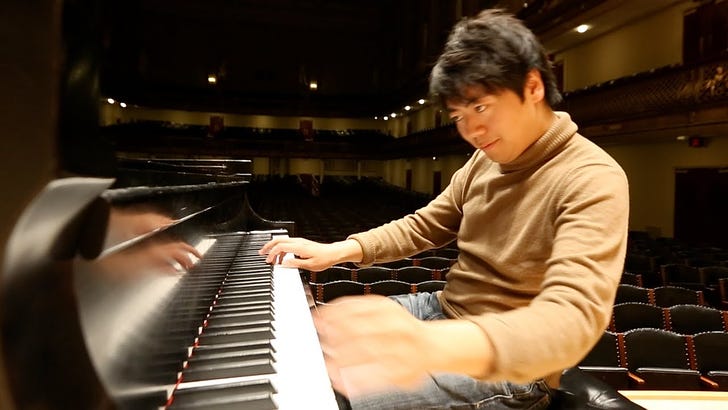


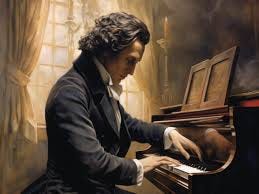
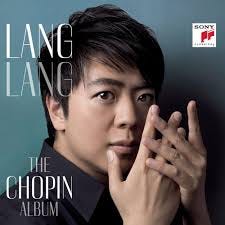
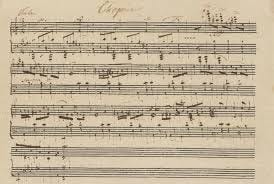
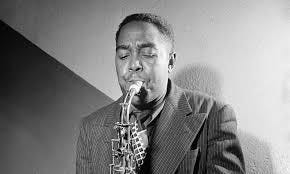


Wonderful entry Tom. If you have any scraps of your own, please send them my way.